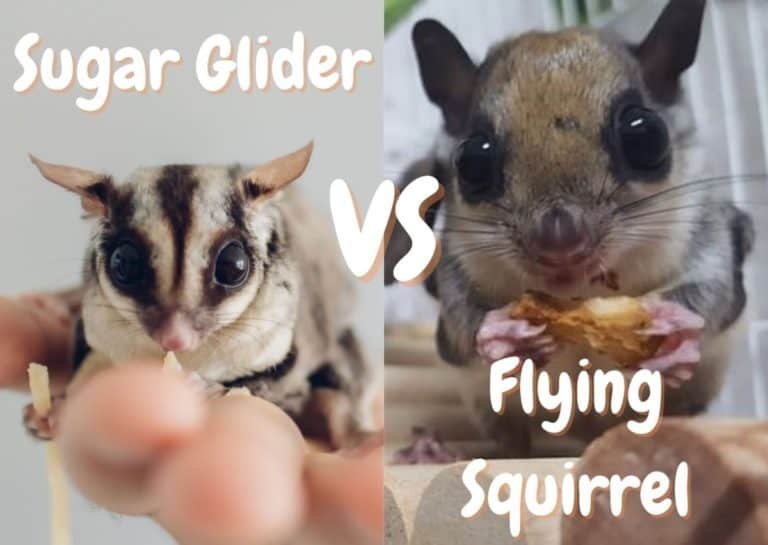How Many Sugar Gliders Can Live Together
How many sugar gliders can live together?
If you’re considering getting sugar gliders as pets, one important factor to consider is how many can live together in the same enclosure. Sugar gliders are social animals that thrive in groups, so it’s important to provide them with compatible companions for their overall well-being. In this article, we will explore the dynamics of sugar glider groups, how many can live together harmoniously, and factors to consider when introducing new gliders to an existing group.
Gliders are social creatures by nature
First and foremost, it’s crucial to understand that sugar gliders are highly social creatures. In the wild, they live in large family groups, known as colonies or troops, consisting of 10 to 30 individuals. These groups provide safety, companionship, and opportunities for social interaction. When kept in captivity, replicating a similar social environment is essential for maintaining the emotional and mental health of sugar gliders.

Understanding compatibility
When determining how many sugar gliders can live together, compatibility is key. Gliders are territorial animals, and not all individuals will get along. They have unique personalities and preferences, so it’s important to observe their behaviors and interactions to ensure a harmonious living environment.
Social hierarchy
Sugar gliders establish a social hierarchy within their groups, with dominant and submissive individuals. This hierarchy is usually established through displays of aggression, such as vocalization, biting, or territorial marking. Understanding the social hierarchy is crucial when introducing new gliders to an existing group. It’s generally recommended to introduce gliders of similar age and size to minimize potential conflicts.
Gender dynamics
Gender dynamics can influence the compatibility of sugar gliders living together. Male gliders, called boars, are generally more territorial and prone to aggression than females, known as sows. Keeping multiple males together can lead to increased dominance-related conflicts. A common recommendation is to keep male-female pairs or small groups of females together to reduce the chances of territorial disputes.
How many can live together?
The optimal number of sugar gliders that can live together depends on various factors, including the available space, individual personalities, and overall compatibility. As a general guideline, a minimum of two gliders is recommended, as they thrive in social settings. However, larger groups can also be successful if the necessary conditions are met.
Pairs
Keeping a pair of sugar gliders is a popular choice among owners. In a pair, gliders can bond closely and provide companionship for each other. With two gliders, there is less likelihood of feeling lonely or stressed. However, it’s important to note that if one glider passes away, it’s crucial to provide the remaining glider with sufficient social interaction or consider introducing a new companion.
Trios or small groups
Some owners opt to keep trios or small groups of sugar gliders. This can provide additional social stimulation and enrich their living environment. However, it’s important to carefully select gliders that are compatible and observe their interactions closely. Proximity and space availability are also important considerations when determining the number of gliders in a group.
Larger groups
Keeping larger groups of sugar gliders is possible, but it requires a larger enclosure and careful management. With larger groups, there is a higher chance of conflicts and hierarchy disputes. Providing sufficient space, multiple feeding stations, and opportunities for social interaction is essential to minimize stress and promote a harmonious living environment.
Introducing new gliders
When introducing new gliders to an existing group, it’s crucial to follow a gradual and careful process. Sudden introductions can lead to aggression and territorial disputes. The new glider should be segregated initially to allow the existing group to become familiar with their scent and presence. Slow introductions can be done through supervised playtime or gradual introduction within neutral territory. It’s important to closely monitor the interactions to ensure the safety and well-being of all gliders involved.
Frequently Asked Questions
1. Can different sugar glider species live together?
No, it is not recommended to keep different sugar glider species together. Different species have different care requirements, behaviors, and temperaments. Mixing species can lead to conflicts and stress for the gliders.
2. Do all sugar gliders get along?
Not all sugar gliders get along. They have individual personalities, and some gliders may be more dominant or aggressive than others. It’s essential to observe their interactions and provide compatible companions for a harmonious living environment.
3. How do I know if my gliders are compatible?
Compatibility can be observed through their interactions. Signs of compatibility include grooming each other, sleeping together, and playing without aggression. However, it’s important to closely monitor their behaviors and intervene if any signs of aggression or stress arise.
4. Can I house sugar gliders with other small pets?
Sugar gliders should not be housed with other small pets, such as hamsters or gerbils. Their care requirements, behaviors, and social dynamics are different, and housing them together can result in stress, aggression, and potential harm to the gliders or other animals.
Final Thoughts
When considering how many sugar gliders can live together, it’s important to prioritize their social needs and individual compatibility. Providing a harmonious living environment with suitable companions is crucial for the well-being of sugar gliders. Pay close attention to their behaviors, establish a social hierarchy, and create an enriching living space to ensure a happy and healthy glider family. Remember, each group is unique, and it may take time and careful observation to find the perfect balance for your gliders.







